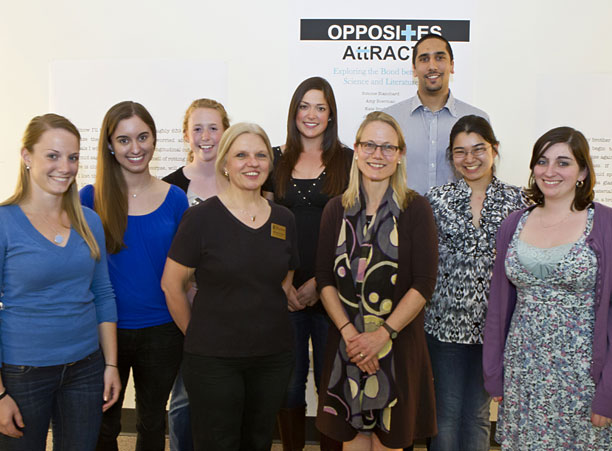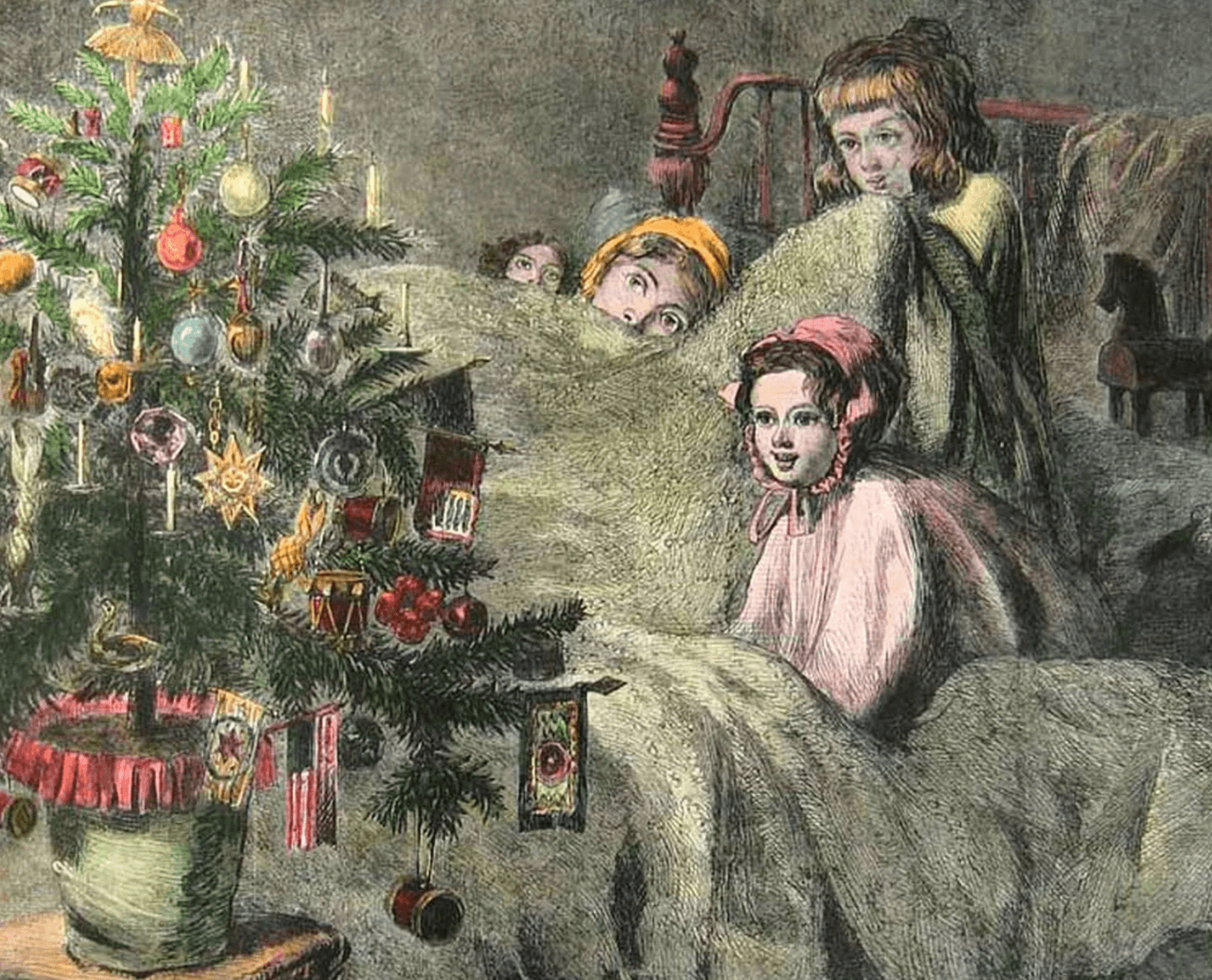The posters lining windowed walls of the O’Callahan Science Library posed two questions to all who entered: What are the questions that science asks? and What are the questions that literature asks?
After weeks of exploration and experimentation with narrative, students in the science writing workshop Quarks to Quasars presented their work at a pioneering event, “Opposites Attract: Exploring the Bond Between Science and Literature.” On the evening of April 18, the normally hushed atmosphere of the library was transformed into a dimmed venue where the class, led by Leila Philip, associate professor of English, shared the results of its semester-long dedication to Holy Cross’ first science-based creative writing class.
Philip opened the event by quoting the famous writer Vladimir Nabokov: "A writer must have the passion of a scientist and the precision of an artist." She described the influence that the scientific method had on the structure of the course she architected: “Much like the process of good science, creative writing also has us ask questions, complete background research, conduct a hypothesis and test that hypothesis through word.” Calling her students “explorers,” Philip challenged them to find and tell stories by making use of and exploring the metaphoric resonances of scientific facts.
With the assistance of science librarian Barbara Merolli, the students found creative ways rooted in science to link many different academic interests to their narratives. Topics ranged from the chemical makeup of sea glass to the psychology of human interaction.
Amy Boerman ’12 wrote a narrative on her experiences in an Ecuadorean medical clinic.
“[This course] definitely made me think outside the box,” she says. “It required me to synthesize my two fields of study, English and premed, to create a final piece that was reflective of both my analytical and creative skills.”
Matthew Koss, associate professor of physics, was impressed by the work at the event, remarking, “Science is not science unless you can communicate it. The students will become better scientists if they can think through and articulate it.” He added: “Interdisciplinary classes like this one supplement the liberal arts education.”
Philip’s class was motivated by what she calls “eureka moments” when word and scientific fact suddenly connect. “Good scientists, by nature, must be profoundly creative people,” she says.
Related Information:


